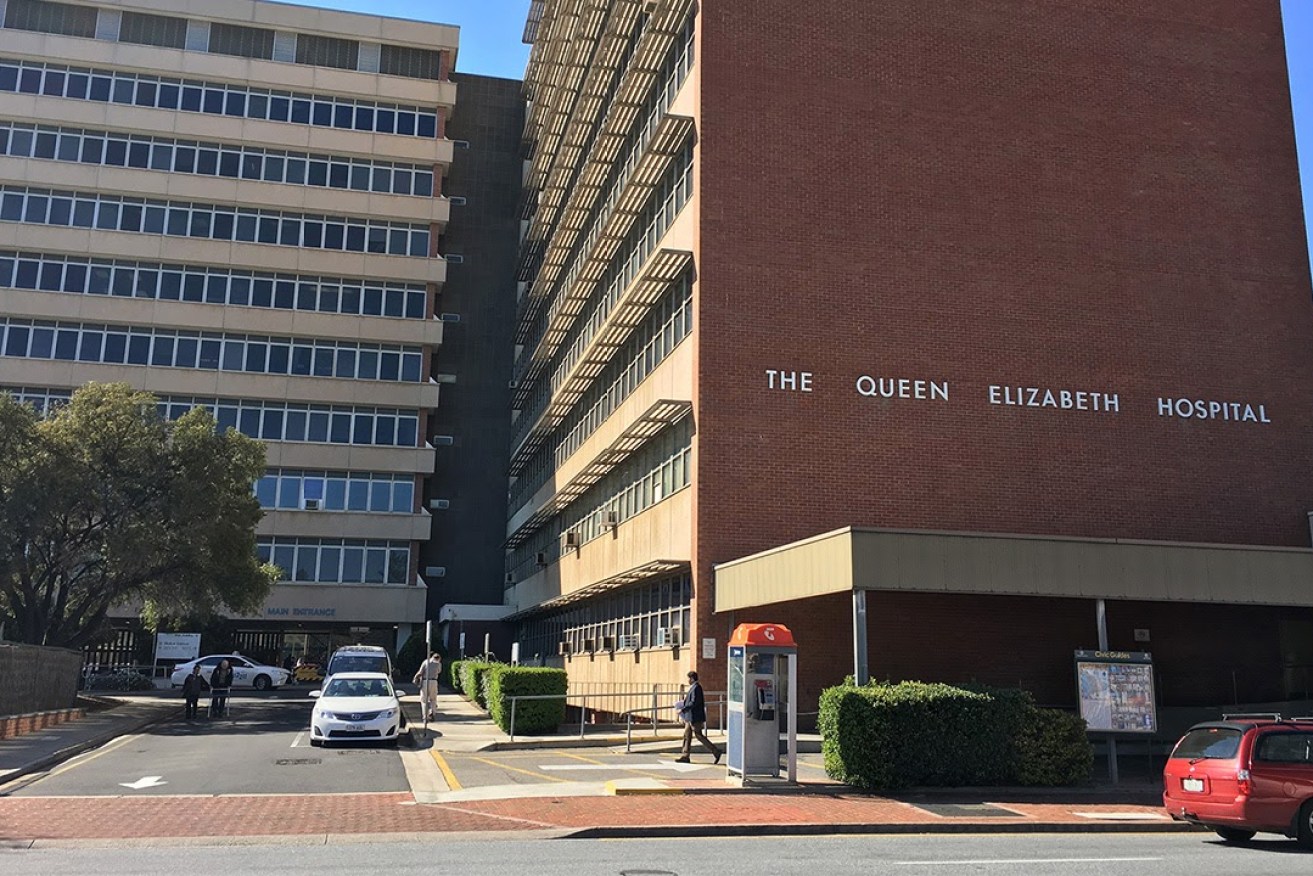Doctors “lost control of ED” after planned EPAS shutdown: union
Doctors lost control of an Adelaide emergency department after the hospital’s electronic patient health records system was switched off at the start of the hospital’s busiest day, a union inspection report says.


Doctors "lost control" of patients at the Queen Elizabeth Hospital emergency department after a planned IT system shutdown, a South Australian Salaried Medical Officers' Association report says. Photo: Tony Lewis / InDaily
A report penned by a doctors’ union inspector, obtained by InDaily, says medical staff at the Queen Elizabeth Hospital “effectively lost control of the patients and the service” during a 24 hour period late last month.
The crisis was caused by a severely overcrowded emergency department, a lack of available staff and hospital beds, and a planned shutdown of e-health system EPAS, which occurred during “the busiest day for ED’s and hospitals generally” says the report, by South Australian Salaried Medical Officers’ Association senior industrial officer Bernadette Mulholland.
According to the report, Mulholland was called to the QEH ED on March 28, a Tuesday, after the Enterprise Patient Administration System (EPAS) – an electronic patient records system – was taken out of action at 12:00am on Monday and turned back on at 6:30am.
However the union and SA Health cannot agree on which day the EPAS outage occurred.
SA Health says the planned stoppage actually happened on the Tuesday, the day of the inspection.
A spokesperson told InDaily this morning that “a planned upgrade was scheduled across EPAS sites between midnight and 5.30am on Tuesday 28 March but a separate, unrelated technical issue with the medical imaging system resulted in the upgrade taking one hour longer than anticipated”.
“Contingency plans were implemented by clinicians and staff throughout the upgrade and there were no adverse impacts to patient care at any time.”
The union report says that when the system was switched back on, the patient list from the previous day was unaltered, and the hospital had to conduct a full audit of patient status and whereabouts on a Monday, known to be hospital’s busiest day each week.
“The medical officers advised that the last 24 hours had been the worst they had ever experienced in the QEH ED,” the report reads.
“When EPAS went down and then came on line with the wrong patients, the medical officers state they effectively lost control of the patients and the service.
“[…] Medical officers stated that ‘their situational awareness was completely lost’, and given it is the only patient system ‘when EPAS is lost you lose total control of the system making it unsafe for anyone involved [including] patients and staff’.”
The report says doctors had been informed that “planned downtime” for EPAS would occur that day.
However, the report says, “no one had consulted with medical staff to determine whether Monday (given it was the busiest day for ED’s and hospitals generally) was appropriate or safe”.
The SA Health spokesperson said, however, that “as is always the case, we consult with our clinicians and hospital staff about the most appropriate time for any scheduled IT upgrade, and communicate notice of the planned upgrade widely”.
Mulholland told InDaily she had not asked medical staff whether they had expressed concerns about the timing of the shutdown when they were informed of it in advance.
The report says another system, Carestream, also crashed, stopping doctors from viewing patient images.
The report claims that hospital management knew “from Monday morning of the unsafe situation at the [emergency department, but] did nothing to address the situation”.
Mulholland’s report says there were 52 patients requiring hospital beds on the day of inspection, but only 31 were available.
Five of those were mental health patients, one of whom “had been waiting for 25 hours, another 22 hours, two were waiting 19 hours and one was waiting 15 hours in the ED”.
Mulholland said QEH doctors who spoke to her were concerned that “if this is what we’re seeing now, and we’re not in winter [when there are more influenza patients] they worry is: ‘How are we going to cope this winter?’”
She said that there had been no “robust escalation process” to provide more staff, or make more beds available in times of high demand at the QEH.
“Frankly, it’s scary,” she said.
She added that Mondays were often the busiest time for the hospital’s ED, and that the decision to shut down EPAS that morning exacerbated what was already a “crisis”.
“Doctors were unaware where [particular] patients were located,” she said.
“They had lost control of the patients.
“They had to do a complete audit – this was at the same time that more and more patients were presenting to the ED.”
The report claims the conditions on the Monday and Tuesday breached the Work Health and Safety Act because hospital management “had not, so far as is reasonably practicable, ensured the health an safety of workers engaged by the employer when carrying out work determined”.
The report was addressed to SafeWork SA, which InDaily has contacted for comment.




